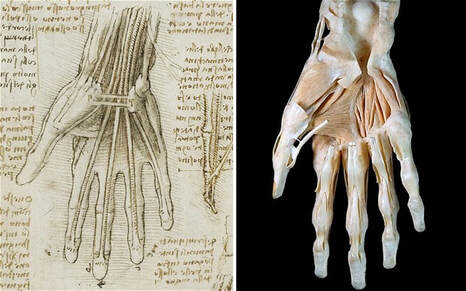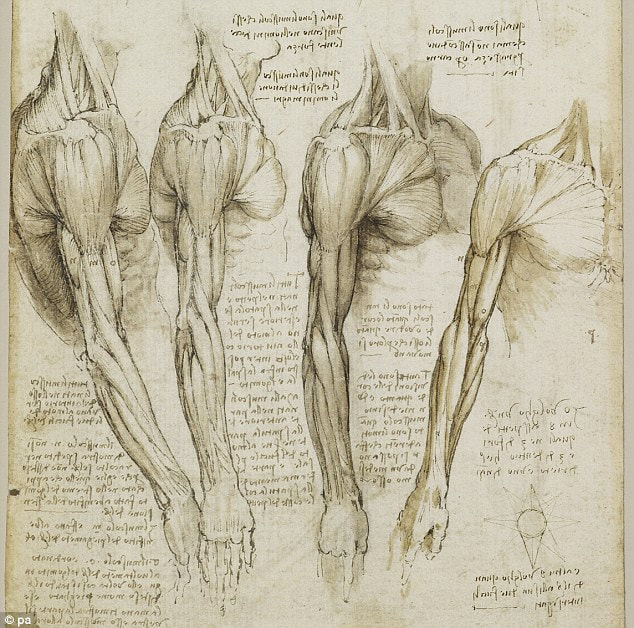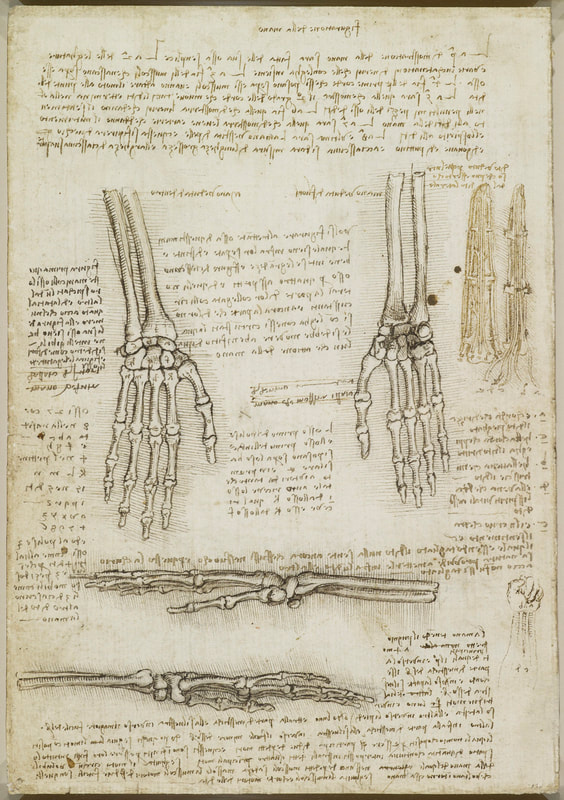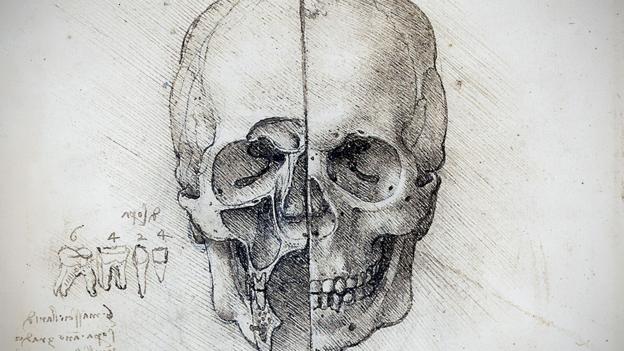STEAM like Leonardo ERASMUS+ PROJECT
Leonardo - the anatomist

Leonardo da Vinci became an expert in the anatomy of the human body, studying it in detail and creating hundreds of drawings to help explain his thoughts. He drew uncannily accurate studies of the human body.
Leonardo’s interest in anatomy began when he was working for Ludovico in Milan, when he began his book entitled On the Human Figure. However, after completing a sequence of stunning drawings of a skull, his studies paused, probably because he lacked access to corpses that he could dissect. Around two decades later, he returned to his notebook, now known as the Anatomical Manuscript B, where he made a number of pen-and-ink drawings, recording his observations while dissecting an old man who had died in a hospital in Florence in Winter 1507/08.
Leonardo’s interest in anatomy began when he was working for Ludovico in Milan, when he began his book entitled On the Human Figure. However, after completing a sequence of stunning drawings of a skull, his studies paused, probably because he lacked access to corpses that he could dissect. Around two decades later, he returned to his notebook, now known as the Anatomical Manuscript B, where he made a number of pen-and-ink drawings, recording his observations while dissecting an old man who had died in a hospital in Florence in Winter 1507/08.
|
Among approximately 800 anatomical illustrations made by da Vinci, a great number of drawings are devoted to the cardiovascular system. Leonardo made many important discoveries. For instance, he produced the first accurate depiction of the human spine, while his notes documenting his dissection of the Florentine centenarian contain the earliest known description of cirrhosis of the liver.
Leonardo had continually studied the structure of the body in order to be able to depict the human figure properly. In 1510 in Pavia, Leonardo and Marcantonio della Torre, a professional anatomist at the University of Pavia, started dissecting corpses. This collaboration raised Leonardo's research to a higher scientific level that showed itself in the quality of his drawings. In these studies it is no longer merely a question of discovering what physically exists; instead, the interplay of bones, muscles and tendons comes to fore. |



